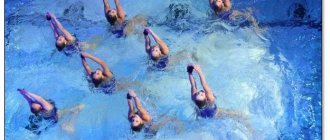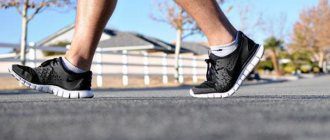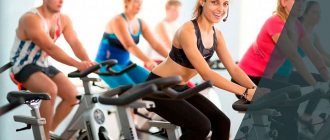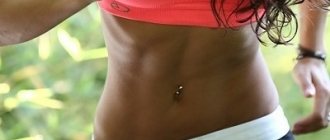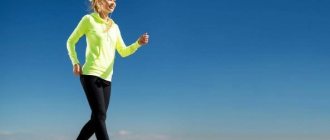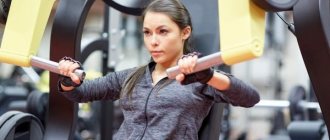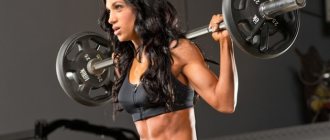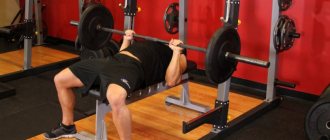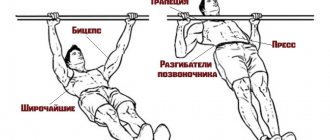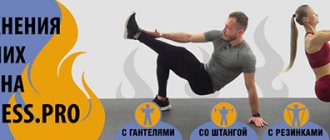Footwork
The most significant load falls on the cyclist's legs. The movement of a bicycle is carried out to a greater extent by twisting the pedals, with the only exception being electric bikes, which do not require significant use of human effort. It is because of the main load on the lower part of the body that the cyclist's leg muscles are especially developed and look as if they spend a considerable amount of time in the gym.
Lower legs
By alternately pressing the bicycle pedals, the calf muscles and hamstrings are activated. Thus, a large load is provided, allowing you to develop and improve the lower muscles of the legs, simply by moving at a normal pace of the trip.
Upper legs
All thigh muscles are involved in the riding process no less than the calf muscles. The largest part of the load falls on the quadriceps, but the biceps also get work. When lifting a bicycle uphill, the created tension in the muscles of the hips is especially felt.
Hip flexor
The iliopsoas muscle is located in the groin and spine, and is responsible for the movement of the hip. The psoas and iliacus muscles, which form one of the most powerful flexor muscles, take on considerable load when cycling. You should not overdo it with training, especially at the initial stage, since an overstrained muscle reduces the performance of the hip joint, and it will be very difficult and uncomfortable for you to move, especially to climb up.
The main load falls on the legs
Common Mistakes
Despite the simple technique, athletes often make a number of mistakes. They not only reduce the efficiency of movement, but can also have a detrimental effect on the condition of the spine.
Main mistakes:
- Raising your head - if your hands are not behind the back of your head (as in the usual version), it is correct to do the movement with your head firmly pressed to the floor. This will ensure the natural position of the spine and avoid injuries to the cervical region.
- Pulling the head with your hands - in variants when the hands are brought together at the back of the head, it is necessary to completely relax them. Athletes often pull their body with their arms, trying to bring their head closer to their legs. This not only reduces the benefit of the entire work, but is also guaranteed to lead to problems in the cervical spine.
- Lack of concentration and tension - a large number of muscles work in movement. If you do not focus on the abdomen, maintaining tension, the load will be distributed to other areas.
- Fidgeting body - your back should be close to the floor. A destabilized body significantly reduces efficiency and reduces stress on the press.
Effectiveness for weight loss
Also take note of the following information:
Active burning of calories occurs only if there is sufficient water consumption and a balanced diet; It is necessary to follow the principles of a balanced diet. The menu should include protein products, vegetables, herbs, cereals
It is important to avoid high-calorie foods; If the calorie consumption during training is less than their consumption in food, you will not be able to lose excess weight; Upright exercise bike models are great for weight loss, as they can provide the most optimal training regimen for burning fat; can be anything - mechanical, magnetic, electromagnetic. You can make the choice yourself, focusing on convenience, availability of necessary functions, price and other characteristics
It would be good if it had a calorie counter, speed control, and also counted the distance traveled.
Peculiarity!
The waist size will decrease, and fat deposits in the abdominal area will disappear when two components are combined - regular exercise and avoidance of high-calorie foods.
Do a warm-up before the main part of your workout.
It is important to warm up stiff muscles and joints. This will protect you from sprains and other possible injuries.
Those who do warm-ups find it easier to get rid of extra pounds. The final stage is also important - the cool down. It allows you to normalize pulse, blood pressure and relax muscles.
Also remember:
- After the first workouts, you often feel quite severe muscle pain, especially in the area where the load was maximum. To alleviate this, it is advisable to take a bath at a pleasant temperature with the addition of sea or regular salt. This will relieve muscle spasms and relax the body
. A contrast shower with alternating cool and hot water is also useful. Over time, when the muscle groups of the legs begin to gradually strengthen and the joints develop, the pain goes away. Based on the location of the pain, you can determine which area was worked to the greatest extent. - For beginners, increase the load gradually, do not “rush into battle.”
Measured regular exercise will help you achieve your goals and avoid injuries. - If you have problems with your back and joints, choose for training. This will reduce the load on the muscles of the pectoral and lumbar region .
It will also allow you to smoothly and evenly increase the mobility of the leg joints. - The intensity of the given loads must correspond, first of all, to the level of physical fitness.
- Focus on your condition and, if necessary, reduce the intensity of your workouts.
Don’t look at your neighbor in the hall - everyone has their own individual characteristics of physical fitness and health status. - For home use, purchase it, it takes up little space, and if necessary, you can take it with you on a trip.
Also watch the video:
To make the exercise bike your friend, follow the tips and recommendations for its use. Exercise regularly, but don't overwork yourself. When overloaded, the body gets tired and begins to “shirk” from activities. Training should bring joy and pleasant fatigue. To lose weight, do not forget to incorporate the principles of rational and balanced nutrition.
The positive effects of cycling
You can feel improvement in all areas of your life from the very beginning of classes. A person becomes not only more resilient, but also physically active. Stress and difficult everyday situations are easier to bear, because you can always “get away” from problems and think about solving them. Naturally, there is an incentive to always be in good shape, and also to be liked by others. Self-confidence arises. There is a certain restructuring of character: many things are seen in a more optimistic way than before. This is facilitated by pleasant fatigue after training and excellent well-being from the loads received, which will come with time.
How muscles work when riding a bike
For convenience, I will duplicate the picture above. In general, throughout the entire period, the leg muscles work, but with different intensities. So:
- In the cycle from 12 o'clock to 6 o'clock, the calf muscle, the leg muscle, and plus the gluteal muscle are very involved.
- In the cycle from 6 to 9 o'clock, the back surface of the leg is put into work.
- In the 9 to 12 o'clock cycle, the circle ends with the flexor (iliac) muscle, which pulls the pedal in its upper position.
Now comes the fun part. This kind of muscle work when driving is typical only for those who perform correct radial pedaling. This requires clipless pedals and cycling shoes. In another way, the leg muscles work only to apply pressure, in other words, in a cycle of 12 to 6 hours. This means that they will have a greater load, as a result of which lethargy will come more quickly, while others will remain unused.
With all this, radial pedaling will also allow you to ride harder. This is very noticeable when driving uphill, when the work of every muscle is very important, when, in order not to stop, you need to make every effort.
It should be seen that you can really build up muscles only if you deliberately train for this. Riding a bike at a comfortable pace will not give the desired effect; it is akin to ordinary walking, from which no one has received phenomenal muscle definition.
But they don’t ride a bike to pump up muscles or lose weight. Even more important are the feelings that the bike gives. This is one of the best types of active recreation, I recommend that you continue to do it. I'm sure you will still find this website useful, check out the other materials!
How to combine business with pleasure? Is it possible to pump up your legs on a bicycle?
Many people are interested in whether it is possible to build up their legs on a bicycle. Of course you can. To do this, just look at professional bicycle racing participants. Their involvement in the sport is revealed by their strong, muscular legs.
Bicycles were once called bone shakers. The expression, although figurative, is accurate. Moreover, cyclists have a sedentary job, but at the same time with a lot of physical activity.
It is difficult to say who spends more effort, a man on a horse or a man on a bicycle. Both are sitting, but both are working hard on their legs.
Only the primary load is placed on different muscles of the lower extremities.
The specificity of cycling is that the load is placed on the area of the lower and upper extremities. The back, of course, also experiences stress, but the spine suffers less.
When riding a bicycle, some muscles directly provide movement, while others are involved indirectly.
The load on the back depends on the position of the saddle. On sports bikes it is located almost at the same level as the handlebars. This provides all the muscles of the back and neck with greater stress. However, it is static in nature, since it is mainly the stabilizer muscles that work.
On a regular bicycle, the saddle is located below the handlebars, allowing you to sit almost upright. At the same time, the back experiences the minimum possible load for such dynamic work.
The position of the upper limbs belt seems to many to be devoid of dynamics. In fact, hands are only needed to hold the steering wheel.
When riding a sports bike, they experience a large static load. Hand dynamics only appear when turning.
The maximum load in this case falls on the shoulder part of the upper limbs, especially on the deltoid muscle, as well as on the hands.
However, unlike the back and abs, the buttocks begin to dynamically pump up when riding in an elevated state. This is especially pronounced when riding on very rough terrain, when in order to overcome uneven terrain, you have to rise above the saddle.
At this moment, movements are carried out not only by the legs, but also by the buttocks.
Legs are the main workers of all cyclists. However, despite the increased dynamics, the load on their various parts is too monotonous.
Little load goes to the biceps and semitendinosus muscles, which are located at the back. They, of course, are in motion, but do not experience the force load that falls on the front of the thigh.
A bicycle is not only a means of transportation in space, but also a simulator that helps improve the health and beauty of the body.
This sport is considered to be predominantly aerobic, which does not exclude elements of strength work. Many people believe that they can only build sculpted muscles using exercise equipment in the gym, and that cycling only helps you lose excess weight and improve the shape of your legs.
However, the above overview of the role of various muscles in providing bicycle propulsion suggests hidden possibilities for shaping the body's topography that are poorly used by people.
- 1. If possible, ride different bikes. The difference between a sports and a conventional means of pedal movement lies not only in the change in the impact on the muscles of the back and the belt of the upper limbs, but also in the degree of involvement of various leg muscles in the work. The fact is that when transferring from one bicycle to another, the angle of inclination of the torso relative to the waist of the limbs changes, which also changes the levers that ensure the statics and dynamics of the whole body.
- 2. Travel over rough terrain more often. At the same time, choose not only ascents and descents, but also a complex system of turns and turns.
- 3. If your skill in riding a two-wheeled moving simulator is high enough, you can change your body position on the go. The standing position is especially effective. While you're sitting in the saddle, the lion's share of the work is done by the front thigh muscles. As soon as you begin to move without the support of the saddle, the gluteal, biceps and semitendinosus muscles begin to work especially actively. If you manage to combine horse riding in the saddle with cross-country riding, you will not only get beautiful, sculpted legs, but also great pleasure from the variety of movements and emotions.
Thus, a bicycle is an excellent means of transportation, an effective exercise machine for pumping up muscles, and most importantly, a source of health and fullness of senses.
Core musculature
Now let's get back to what muscles are affected by cycling. The process itself has incredible health benefits, increasing fiber strength and overall balance skills. Of the core muscles, including the stomach and back, the abdominals and obliques benefit the most, and maintaining tight abs while riding strengthens them even more. Increasing abdominal strength relieves tension in the lower back muscles and can reduce lower back pain. Cycling also has a positive effect on the hip flexors. They play a key role in balance, an important skill for a cyclist.
Muscles of the lower extremities
Lower leg: gastrocnemius, soleus and pennate muscles
Naturally, the first thing that comes to mind is that cycling affects the development of the muscles of the lower leg and thighs. This is indeed true. Cyclists have slender, muscular legs. First of all, the calf muscles, such as the gastrocnemius and the deeper-lying soleus, will work well only when the cyclist uses "extra pumping" - in addition to knee extension, as they approach "bottom dead center" - the vertical position of the bottom pedal – an additional movement of the foot is performed, similar to raising on the toes. This summation of muscle effort helps increase the load when riding uphill.
It is important that the work of the lower leg muscles is somewhat different from other large muscles. They are more resilient, due to the structure of their muscle tissue, and are able to consume less oxygen.
If the cyclist places his feet in toe clips or wears special shoes, then raising the leg upward is not passive. However, this mainly works the muscles of the thighs, not the lower legs.
Thigh muscle groups: quadriceps (anterior), biceps (posterior). Without exaggeration, the anterior thigh muscles (quadriceps) are the main ones that experience stress when riding.
Their function is to straighten the leg at the knee joint.
The posterior thigh muscle - biceps - together with the semimembranosus and semitendinosus muscles is capable of working in the opposite function - flexion. Therefore, riding in toe clips promotes the harmonious development of the thigh muscles and improves blood supply to muscle tissue, as well as strengthening the ligamentous apparatus.
Muscles of the lower extremity girdle: the gluteus maximus and gluteus minimus are involved. Their function is synergy. They are included in the movement together with the quadriceps muscles, coordinating their work.
Since the gluteal muscles are the largest in the human body, their constant work leads to significant energy expenditure. In addition, the buttocks, moving alternately from the saddle to the sides, help prevent falling and promote balance when deviating from a straight path.
Route
For weight loss, driving on the road with smooth descents and ascents is best suited. Riding on a flat track is suitable for a beginner, but it will soon cease to give the desired effect. And the belly loses weight best when climbing uphill. Therefore, it is better if after the first couple of months you forget about riding on a flat surface and choose a route with smooth climbs. You should be wary of steep hills, at least until you feel truly ready to ride them - they not only do not contribute to weight loss, but can also be dangerous, because overcoming them overloads the knee joints.
There is no need to be embarrassed if you occasionally dismount and walk. Alternating between skating and walking is a great workout option for losing weight. By changing the type of movement, the muscles will switch to a different type of load, and this will have a beneficial effect on the number of calories burned. During the walk, your arms and back, which may become numb out of habit, will rest. And it’s much easier to cope with an unsuitable section of the road (for example, a steep slope) on foot - this way you definitely won’t cause harm to your health.
What explains the popularity of the bicycle?
We have already understood what muscles the bicycle works and why it helps keep the human body in great shape. The accessibility and environmental friendliness of this sport is well known, which affects its enormous popularity in many countries. A bicycle helps not only to lead a healthy lifestyle, but also serves as a means of transportation, which becomes a big plus in city traffic jams; moreover, a bicycle does not require large expenses for its maintenance and does not need gasoline, which means you can add savings to your health funds.
A fit figure of a cyclist
The modern bike manufacturing industry has achieved impressive results, and more and more advanced two-wheeled units are appearing on sale.
Manufacturers pay great attention to reducing the weight of the car and the comfort of the seat. The frame structures, with a noticeable reduction in weight, become even stronger thanks to composite materials, and the control of the braking system is more reliable and trouble-free
Equipping bicycles with speed switches makes it possible to change and regulate the load on the athlete’s muscles when passing uneven sections of roads, steep ascents and descents.
How to choose a bike: which bike is better to buy?
Bicycles offered by sports stores are designed for people weighing up to 110 kg. Various models have been developed for amateur riding:
- cross-country and endoro bicycles are equipped with relatively small wheels, they are ideal for active riding in the forest, park, and unpaved roads;
- A high-slung city bike with a wide, spring-loaded saddle and a rack designed for comfortable street riding.
- mountain bikes (general purpose mountain bikes) are designed for bad roads, off-road, and for aggressive riding on very rough terrain;
- Touring bikes are ideal for riding on asphalt;
- Hybrid bikes can be used on any road, but for steep climbs it is better to choose a mountain bike.
Benefits of a bicycle
When the question arises: what are the benefits of cycling, one can cite as an example the negative consequences of the currently widespread lifestyle. Many people spend a long time at work that requires little or no physical activity. Physical inactivity develops due to the fact that people gradually stop playing sports. This process leads not only to the acquisition of increased body weight, but also to the development of many other pathologies. To solve these problems, it is enough to regularly devote time to cycling. If you devote at least 1 hour a day to this activity, and after a week you will see the positive effect that cycling provides.
The benefits manifest themselves very quickly, as cycling improves blood supply to the pelvic organs, which has a positive effect on the reproductive system. The work of the endocrine glands is modernized. Those women who often rode a bicycle before pregnancy usually endure it more easily, they do not develop complications, and their babies are born healthier than those who did not devote enough time to physical health.
There is also a moral aspect to cycling. If children see that their parents devote a lot of time to cycling, then they themselves strive for physical activity. There are many chances that they will lead a healthy lifestyle instead of smoking, gambling or other bad habits. The future of children depends on the lifestyle of their parents, which includes cycling. The benefit of this pastime is that cycling helps improve physical fitness and set a positive example for younger people.
Secrets of a successful workout
Using an exercise bike, you can solve current problems: lose weight, strengthen muscle mass and improve your health. Regardless of the goals and the chosen program, you must adhere to the basic rules of training on a bicycle simulator:
Regular exercise is half the success. To see the effect you need to practice constantly.
Monitor your health; if you feel that your body is not behaving as usual, you should stop training or reduce its intensity. Characteristic muscle pain is a normal reaction after a long break.
Dangerous symptoms: interruptions in heart rhythm, dizziness, weakness, slight clouding in the head, shortness of breath, nausea.
Follow the schedule and study clearly at the time you set. Don't forget about biological rhythms: morning activities are more suitable for larks, and evening activities are more suitable for owls. The general rule for both groups is that you can train 3 hours before going to bed and 3 hours after waking up.
Be sure to warm up before riding an exercise bike. Only after warming up your muscles do you start training. Squats, bends and leg swings are suitable for this.
Comfortable equipment is very important even for a beginner athlete. This applies to clothes, shoes and hairstyles. Sports, loose clothes, comfortable sneakers or sneakers and hair tied up in a bun or ponytail.
Choose a training program according to your physical fitness. You shouldn’t look up to anyone, your own health is most important.
Beginners should start with the basics and gradually move on to more intensive programs. It is strictly forbidden to skip stages!
Video training on an exercise bike
More visual information can be obtained in the following video, where Svetlana Tcherezova, a fitness instructor with twenty years of experience, will talk about cardio training and the features of exercising on an exercise bike.
httpv://www.youtube.com/watch?v=embed/SHyNvVQUHcs
If you decide to approach it wisely and train on an exercise bike according to all the rules, like participants in the famous cycling races, then don’t be lazy and develop a training schedule, describe in detail how much, how and when you will train!
Do not forget that the effect will only come from systematic exercise on an exercise bike!
Have you already tried your hand at an exercise bike? Write about your results - become an inspiration for thousands of our readers!
What muscles does the bike work?
To begin with, we will describe all the muscles involved on the bike, and then we will look at the nature of their work from a certain stage of pedaling. Let's start from the top.
Working the muscles of the arms and shoulders
These muscles are used the least, which confirms the physique of many professional cyclists - pumped up bottom and weak top. You can feel the work of the muscles of the arms and shoulders when riding a bike:
- when the landing is not quite correct, when there is very strong emphasis on them;
- when turning on a bike;
- when climbing uphill, when the balance is too big, it is difficult to maintain balance, and in order for the bike not to ride up, you need to work well with your hands.
Abdominal muscle work
I had to ride a bike after a good workout on my abdominal muscles, and believe me, this group of muscles feels great when riding a bike.
- Maintains correct fit on the bike;
- Keep your back straight;
- They are connected when pedaling while standing using the “dancer” technique.
Leg flexor work
This article is about a very vulnerable muscle, especially in cycling, the iliacus muscle. It is located in the groin area and is responsible for both leg extension and knee flexion. These are very important functions when riding a bike; you should be careful and stop the ride if you feel painful.
Butt muscles
The gluteal muscles are closer to the leg muscles, and therefore are very important:
- They help work the quadriceps (front muscles of the leg) or the quadriceps muscle of the leg;
- Together with the abdominal muscles, they are responsible for maintaining balance on the bike and holding the body in a suitable position.
Upper leg muscles
In this case, we are dealing with the most massive muscles of the legs - the quadriceps and biceps of the leg. When riding a bike, these muscles are shock muscles, the main load is applied to them, in turn, the quadriceps is a little more.
The quadriceps kick into action when you press the pedal, you can feel them perfectly during the climb;
The biceps are worked by pulling the pedal from the bottom position.
Lower leg muscles
We are talking about the calf muscles here. To smell them, you need to press the pedal with your toe, and under no circumstances with the middle part of your foot or heel. In addition, the hamstring muscles are activated.
Abdominal muscles
The rectus abdominis, obliques, and transverse abdominis have a major influence on body position. After all, it is the press that controls the tilt of the torso, and it depends on it what kind of load can be given to the hands on the steering wheel handles. If the abdominal muscles are strong, they strengthen the posture and the arms get tired much less. Of course, in this case we are mainly talking about mountain bikes, where the weight of the torso is evenly distributed between the legs and arms.
Exercise bicycle is an effective exercise for a beautiful figure.
Many men and women dream of firm and beautiful abs. But not everyone knows that the “bicycle” exercise is best suited for these purposes.
Surely you remember from school an exercise called “bicycle”. This is what will allow you to achieve great shape and enjoy your abs.
It’s just important to do it correctly and in a timely manner.
Exercise “bicycle” and its correct execution
Paradoxical as it may seem, the “bicycle” exercise turns out to be the most effective workout for achieving a thin waist and flat stomach. Thanks to it, all the abdominal muscles are used, from the rectus and transverse muscles to the external and internal obliques. Next, we propose to consider the procedure for performing such a common and effective exercise as the “bicycle”:
- Lie on your back. Once you are in a stable position, raise your legs, bent at the knees, up so that your shins are parallel to the floor. After this, your hands should be clasped in your fingers and placed behind your head. At the same time, the elbows remain apart.
- The “bicycle” exercise is done by tensing the abs, for which the right leg is straightened at an angle of forty-five degrees to the floor. At the same time, the neck, head and shoulder blades are lifted off the floor. In order to perform the cycling exercise correctly, you should reach with your right shoulder towards your left knee.
- After you complete this exercise, called the “bicycle,” you should return to the starting position and continue doing it, using the other leg. This cycle is considered one repetition.
In this case, you should know that body turns must be performed without the accompanying help of hands. A complex abdominal exercise should be performed at least 3-4 times a week. To do this, you should start with 2-3 approaches, which will consist of 10-15 repetitions.
Gradually increase the number of repetitions to 20-30. The maximum load on the abdominal muscles will be created only if you apply core strength while keeping the bent leg motionless.
You can increase the load by extending your leg to a position parallel to the floor or using weights for this purpose.
Possible mistakes when performing the “bicycle” exercise
In order for the “bicycle” exercise to bring the desired results, it must be performed correctly. To do this, you should refuse to use your hands, do not bring your elbows together and do not create additional tension on the muscles of the shoulders and neck. The exercise is performed at a slow pace and without swinging.
The “bicycle” exercise has proven its effectiveness, but it can only bring you real results if done correctly. For these purposes, you can take a lesson from an experienced trainer.
What strengthens and sways when riding on it
Is it possible to pump up your legs and buttocks on an exercise bike? In general, what can you improve while riding it? What muscles does this exercise machine develop? Knowing some important points will help you get answers to these questions:
- The exercise bike is not designed to build large amounts of muscle mass.
But with regular training, he can pump up all target groups well, give them elasticity and volume, and form a slender and sculpted leg line; - However, there are techniques for effective, which we have already discussed earlier;
- is also possible using special lesson rules;
- Maximum pedal resistance can be provided by exercise bikes with different types of load -,. They are presented in various modifications and a huge range.
By following the basics of a balanced diet, it is possible not only to strengthen muscles, but also to get rid of fat deposits in the calves, thighs and buttocks. You don't have to follow a strict diet
: just give up fried foods, and also gradually eliminate so-called “light carbohydrates” from your menu: chocolate, premium flour products, and sweet carbonated drinks.
With intense and targeted exercise, the abdominal muscles are tightened, the waist size is reduced, and the muscles of the pelvic floor and the entire lower body are strengthened. are best suited for this. They allow you to work the target muscles most intensively. The “hill climb” mode more than doubles the load on the buttocks. This allows you to make this area more elastic and toned.
Exercise bike as a tool for weight loss
When actively exercising on an exercise bike, the thighs and legs are traditionally the first to begin to lose weight. Then the calves will begin to pump, the skin will become more elastic and toned.
In general, that part of the body that has been driving men crazy for decades will definitely improve. The weight will, of course, decrease. But not as much as I would like.
Excess weight will begin to “melt before your eyes” only if you use heavy artillery (a special diet, regimen and, say, fitness or yoga), otherwise you will have to be patient.
Here are some tips on how to exercise properly on an exercise bike to lose weight:
- Train regularly! Don't do yourself any favors! (You can’t skip classes, but you also don’t need to travel without breaks).
- In the first week, do no more than 15 minutes, but every day. From the second week, increase the load to 30 minutes. As soon as you feel ready, round up the time to one hour and conduct classes every other day. Muscles must rest.
If you are tired or overwhelmed by melancholy, remember why you actually started these workouts and don’t give up! Remember: “patience and work will grind everything down!”, even extra centimeters and unevenness on the surface of the thighs.
Types of training
To make your body slim and fit, you need to work according to special programs. The main types of exercises on an exercise bike are below.
Uniform
This training involves manual exercises 3 times in seven days.
Slow
Suitable for strengthening gluteal muscles, thighs, calves
. The duration of the lesson is half an hour.
Sit comfortably on the seat and make sure your legs are bent. You should start with minimal resistance, work your legs at a slow pace for 4 minutes. Then increase the load, but work only with your legs, your torso should be motionless
.
Having chosen the most suitable rhythm, stay in it for half an hour. Then return to minimal resistance and pedal slowly for 4 minutes to regain your breathing.
Fast
Strengthens muscles and adds endurance. The duration of the classes is half an hour.
Start at low resistance, pedal hard for 4 minutes. After warming up, increase the resistance level. Continue to gradually increase the load until it is no longer possible to talk.
The main task is to maintain this pace for 10 minutes
. Then gradually reduce the load level and pedal speed.
Interval
Allows you to burn extra calories and improve body contours, frequency 3-5 times in seven days.
Moderate
Designed for weight loss. The duration of the classes is half an hour. After warming up at low resistance, increase the intensity.
Then switch in turns: 60 seconds at a slow pace and the same amount at a fast pace. You need to finish the lesson with a traditional five-minute exercise at low resistance.
Average
After warming up, increase the intensity of the resistance and pedal quickly for 25 seconds. Return to a slow pace for 35 seconds. And so on in turn for 5 minutes. With each new minute, increase the resistance by one level (until you have enough strength). You need to finish the exercise with a warm-up.
Intensive
Lasts 50 minutes, during this period approximately 600 calories are burned, frequency 4-6 times in seven days:
- jump rope exercises - 8 minutes;
- driving in slow mode - 4 minutes;
- driving at an average pace - 4;
- go into sharp uphill mode (sitting) - 2;
- pedal in the same mode, but in a standing position - 1 minute;
- sit down again and move uphill - 2;
- set the pre-maximum level of uphill climb - 30 seconds;
- turn on maximum and move - 1 min. 30 seconds;
- alternate premaximal with maximum - 2 minutes;
- then the load is halved, pedal in a standing position - 1 minute;
- the load decreases a little more, you need to ride sitting, but a little faster - 3;
- set an even lower resistance level and move at a slow pace - 1 minute;
- get up and do a little exercise in the form of jumping and swinging your legs for 4 minutes;
- pedal quickly - 1 minute;
- continue driving at medium level - 1 min. 30 seconds;
- alternate the two previous points - 5 minutes 30 seconds;
- repeating previous points at a lower speed - 6 m;
- continue driving at a slow pace - 3 m..
Short distance
After a three-minute warm-up at the third level of load, increase its intensity to the seventh level and work your legs at a fast pace for 40 seconds. Return to resistance number 3 and pedal for 40 seconds. Alternate 4 minutes. Cool down at your warm-up pace.
Steady pace
After a five-minute warm-up, work your legs for 15 minutes at a steady rhythm (without fluctuations in the direction of speeding up or slowing down). Increase the load by 2 levels and work for another 8 minutes. Every 8 minutes, increase the load, and so on to the highest level, pedal at the same rhythm. Finish: 5 minutes at a free pace.
General strengthening
Five-minute warm-up at level No. 3. Do it in turns: 6 minutes at load 8, 4 minutes at level six. Repeat this cycle three times. Switch to level 2 and continue driving for 4 minutes.
We warm up the muscles and move to level 6 of the load: pedal for 4 minutes quickly, 3 minutes at a slow pace. We repeat the cycle 10 times.
About the work of the muscles of the torso, arms and shoulder girdle
Unfortunately, it is impossible to pump up the muscles of the neck, shoulder girdle, chest, arms and back well by cycling without other sports. But if you combine a bicycle with exercises on the horizontal bar, rings, or add gymnastics with weights, then the body will be developed quite harmoniously.
Perhaps the greatest work is done by the triceps, which extend the arms at the elbows to coordinate the distance of the torso from the handlebars of the bicycle. The muscles of the shoulder girdle experience some strain when all the muscles of the cyclist are working and he is standing on the pedals. If the hill is very steep, then sometimes the bike needs to be lowered, pushing it away from you and pressing it to the ground.
In conclusion, I would like to note that muscle development will be noticeable only when the load on them is sufficient. Only a constantly increasing load trains muscles and causes them to grow. When the next day you feel pain in the muscles of the legs, in the groin, in the lower abdomen, this means that yesterday’s skating was not in vain, the volume and muscle mass turned out to be insufficient for such a load, and its growth will be successful. This can easily be imagined by remembering the fact that people who walk a lot do not have huge, pumped-up legs.
If muscle soreness is severe, a bath or sauna in the evening, a relaxing massage, and light, leisurely swimming can help. But don't worry. This means that the muscles are pumping.
If after exercise you experience cramps in the calf muscles, especially at night, this may indicate a lack of potassium ions, which could leave the body during intense sweating. To normalize the ionic composition of blood plasma, you can bake jacket potatoes on a sheet, eat raisins, or prepare a rich dried fruit compote.
In addition to muscle development, cycling training can:
- strengthen the immune system, protect the body from infectious and colds;
- improve vision and vestibular apparatus;
- reduce the risk of heart attacks and strokes;
- force the lungs to be supplied with blood more intensively;
- improve the ligamentous apparatus, the endurance of the bone structures of the body.
When riding a bicycle, the function of external respiration improves. Finally, cycling in combination with swimming can improve the health of people with musculoskeletal disorders and excess body weight, since there is no load on the spinal column, causing the appearance of protrusions and hernias, especially in the lumbar spine.
All this, along with the opportunity to feel like a pioneer, the rapidity of changing impressions, not only strengthens the body, but also allows you to get rid of stress and even severe depression in many cases.
What are the conditions for ideal calorie burning during cycling training?
Evening Bike Commute
- When choosing a bike to “burn calories,” you need to take into account your temperament and riding style. If you prefer to travel on roads with good surfaces, then you need to immediately count on long training sessions, since when cycling this style of cycling there will be less variety in the load on the muscles than in the case of mountain biking or mountain biking. It will allow you to rush along forest paths, “soar” with force up steep climbs and, what is especially valuable, “screw in” the pedals while climbing hills. Such a change in postures, work modes, breathing and impressions will lead to a change in the blood supply to the muscles and training modes. But, in any case, the bike must be multi-speed.
- The best conditions for losing weight while cycling are rough terrain and different forms of relief. Monotonous driving on the highway will soon lead to adaptation of the body, which will “cunning”, minimizing energy costs.
- The higher your weight, the faster it will decrease in the first weeks of classes.
- The same can be said about the weight of the bike. But in any case, a lightweight bike allows you to overcome more difficult trails with greater convenience. As a last resort, you can put a couple of bricks in your backpack, and you will again spend more energy.
- Traveling with friends will be very good, as this will create excitement and the desire to periodically go “racing”. This change of pace has a beneficial effect on weight loss; it burns more calories than on individual trips.
- It is important to maintain a drinking regime while on the road. It’s not right if you take two bottles of mineral water with you on the road and get drunk to your heart’s content. The correct thing to do is to take pure water with lemon juice, first hold it in your mouth, and then take several slow small sips. Only then will the breakdown of fats and the absorption of water from them be stimulated. It is also important to refrain from drinking heavily after returning home.
In conclusion, I would like to say: nothing promotes weight loss using a bicycle more than multi-day group cycling trips with a travel regime of 60 - 90 km per day. There is mutual assistance, common goals, and interests. Join the cyclists and stay healthy!
